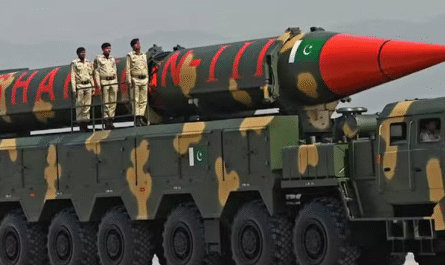As the 2025 monsoon season continues to grip Pakistan, torrential rains have tragically claimed the lives of at least 38 people across various regions of the country. The downpours, which began earlier this month, have triggered flash floods, landslides, and widespread infrastructure damage — once again exposing the vulnerabilities in Pakistan’s urban planning and disaster preparedness.
A Country Under Water
From the bustling cities of Punjab and Sindh to the mountainous terrains of Khyber Pakhtunkhwa and Balochistan, no region has been spared. In Punjab, heavy rains led to roof collapses and electrocutions in several districts, while low-lying areas in Karachi have been inundated due to clogged drains and outdated sewerage systems. In the northern areas, landslides have blocked major highways, stranding thousands of commuters and cutting off access to remote communities.
According to data released by the National Disaster Management Authority (NDMA), the 38 fatalities include children and elderly individuals, with dozens more injured and thousands displaced from their homes.
Rescue Efforts and Government Response
Rescue 1122 teams, army personnel, and local authorities have been mobilized for relief operations. Temporary shelters have been set up for those forced to flee their homes, and food supplies are being distributed. Despite these efforts, many areas remain inaccessible, especially in hilly and flood-hit zones, making it difficult to deliver timely aid.
Provincial governments have announced emergency funds and asked citizens to avoid unnecessary travel and stay alert to weather advisories. The Pakistan Meteorological Department (PMD) has warned of continued heavy rainfall in the coming days, urging residents in flood-prone regions to take extra precautions.
Monsoon Rains Claim 38 Lives Across Pakistan.
Climate Change and Infrastructure Challenges
Experts are increasingly linking these deadly monsoon patterns to climate change, which has intensified weather extremes in the region. Pakistan, despite contributing less than 1% to global greenhouse gas emissions, remains one of the most climate-vulnerable countries. Last year’s catastrophic floods and this year’s ongoing destruction serve as painful reminders of the urgent need for climate resilience.
Inadequate drainage systems, unregulated construction in flood zones, and a lack of long-term planning have compounded the devastation. Urban centers like Karachi, Lahore, and Peshawar continue to suffer during each monsoon season due to poor municipal infrastructure.
The Human Toll
Beyond statistics, the human toll is heart-wrenching. Families have lost loved ones, homes, and livelihoods. School closures, electricity outages, and transportation halts have disrupted daily life across the country. For the poorest communities — often residing in makeshift housing — the monsoon season is not just an inconvenience; it’s a matter of survival.
What Lies Ahead?
As the rains continue, citizens are urged to remain cautious and follow guidance from local authorities and emergency services. The government must not only focus on immediate relief but also invest in long-term solutions: resilient infrastructure, early warning systems, and better city planning.
Pakistan’s monsoon tragedy is a stark wake-up call — a reminder that without proactive climate and disaster policies, the cycle of loss and suffering will repeat each year.
Stay Safe Tips During Monsoon:
- Avoid standing water and open electric wires.
- Refrain from unnecessary travel, especially to flood-prone areas.
- Keep an emergency kit at home.
- Stay updated with local weather alerts and advisories.



